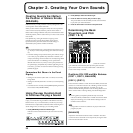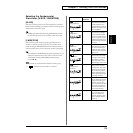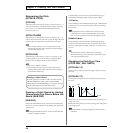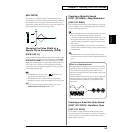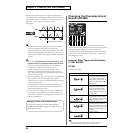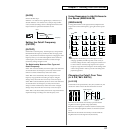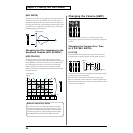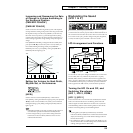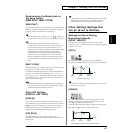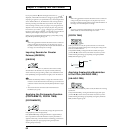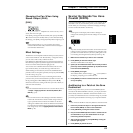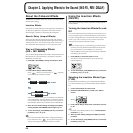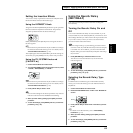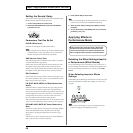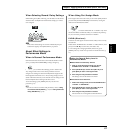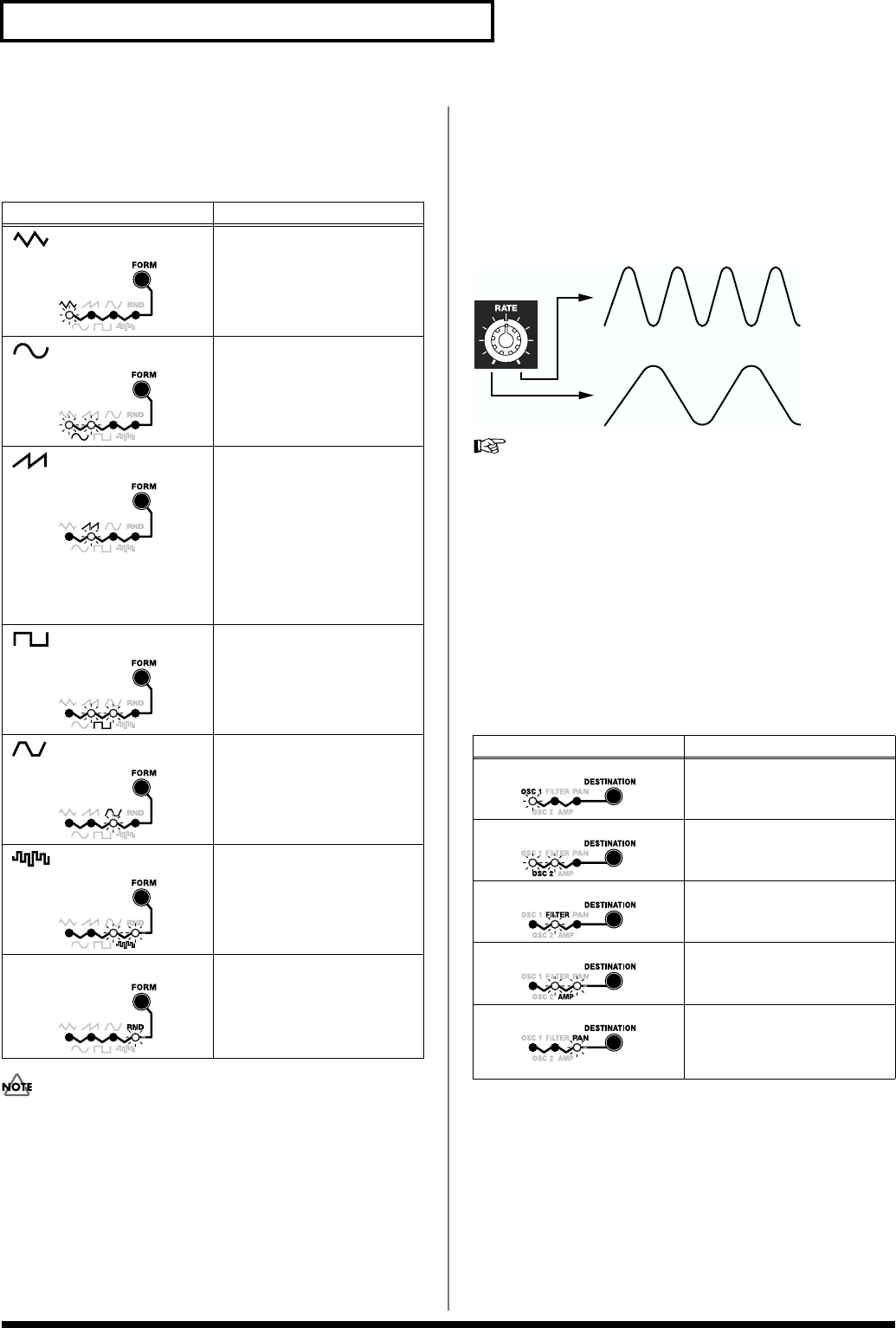
60
Chapter 2. Creating Your Own Sounds
[FORM]
Select the output waveform for LFO. The sound will be modulated
in the same shape as the selected LFO waveform.
The waveforms depicted on the SH-32’s panel are merely images
used for reference. While the actual waveforms that are output
may resemble these images, they are not identical.
Adjusting the Rate of Modulation
(RATE)
[RATE]
This adjusts the rate of the LFO’s modulation. As the knob is rotated
toward the right, the modulation will become faster.
fig.02-37
You can synchronize the LFO rate to Arpeggiator or an external
MIDI device’s tempo (clock). For more detailed information,
refer to “Synchronizing the Modulation to the Song Tempo
(BPM SYNC, BEAT/CYCLE)” (p. 61).
Adjusting the Modulation Depth
(DESTINATION, DEPTH)
[DESTINATION]
Selects the waveform for which the modulation is to be set with
[DEPTH].
[DEPTH]
Sets the amount of LFO that is applied (depth of modulation). The
effect will increase as the knob is rotated further toward the right of
center. Turning this to the left of center (counterclockwise) changes
the direction of the waveform. At the center position, the LFO has no
effect on the sound. Use [DESTINATION] to select the waveform to
which the LFO is applied.
Waveform Description
(Triangle Wave)
The sound will be modulated
continuously. This is suitable
when you want to obtain a vibra-
to effect.
(Sine Wave)
The sound will be modulated
continuously. This is suitable in
situations where, for example,
you want to obtain a smoother
sound.
(Sawtooth Wave)
Upon reaching the crest of the
wave, the wave returns to the
starting position, where it starts
to rise again. Turning [DEPTH]
to the left of center (counterclock-
wise) changes the phase of the
waveform (once the trough of the
wave is reached, the wave re-
turns to the starting position,
where it starts to fall again).
(Square Wave)
The sound will be modulated as
if it were being switched between
two positions.
(Trapezoidal Wave)
The sound will be modulated as
if it were being switched between
two positions. The sound pro-
duced is relatively smoother than
that of the square wave.
(Sample & Hold Wave)
The sound is modulated as if it
were being switched randomly.
RND (Random Wave) The sound is modulated as if it
were being switched randomly.
The sound produced is relatively
smoother than that of the sample
and hold wave.
Destination Description
OSC 1 Sets the LFO depth applied to the
OSC 1 pitch, resulting in a vibrato
effect.
OSC 2 Sets the LFO depth applied to the
OSC 2 pitch, resulting in a vibrato
effect.
FILTER Sets the LFO depth applied to the
filter (brightness), resulting in a
wah effect.
AMP Sets the LFO depth applied to the
amplifier (volume), resulting in a
tremolo effect.
PAN Sets the LFO depth applied to the
pan, resulting in a Particular ef-
fect in which the sound image
moves cyclically.



